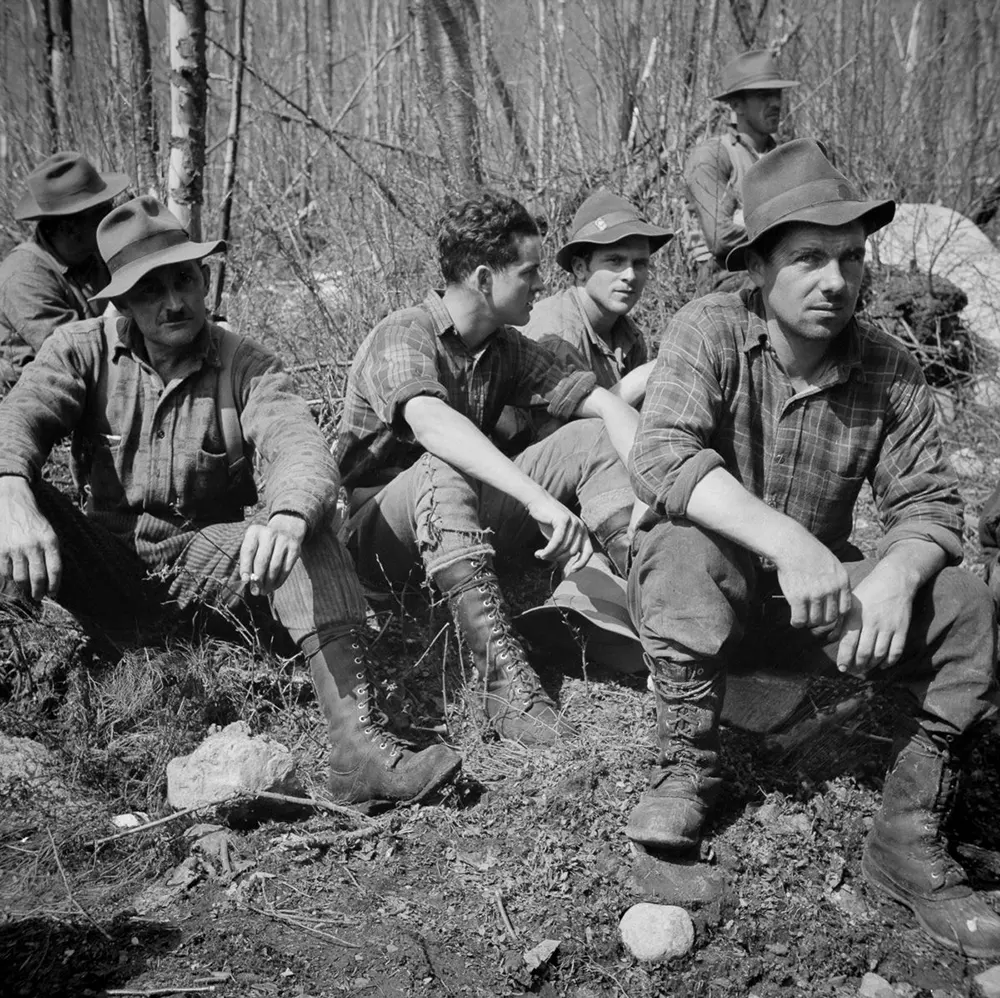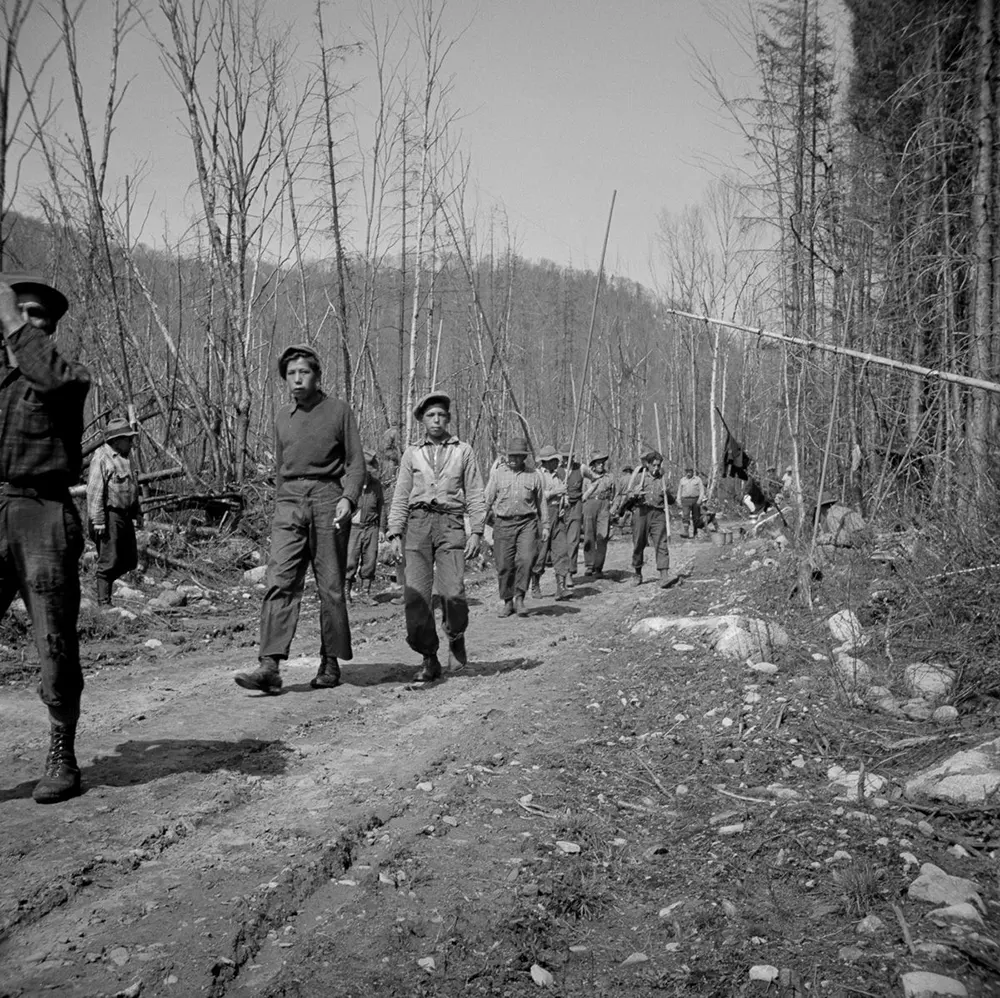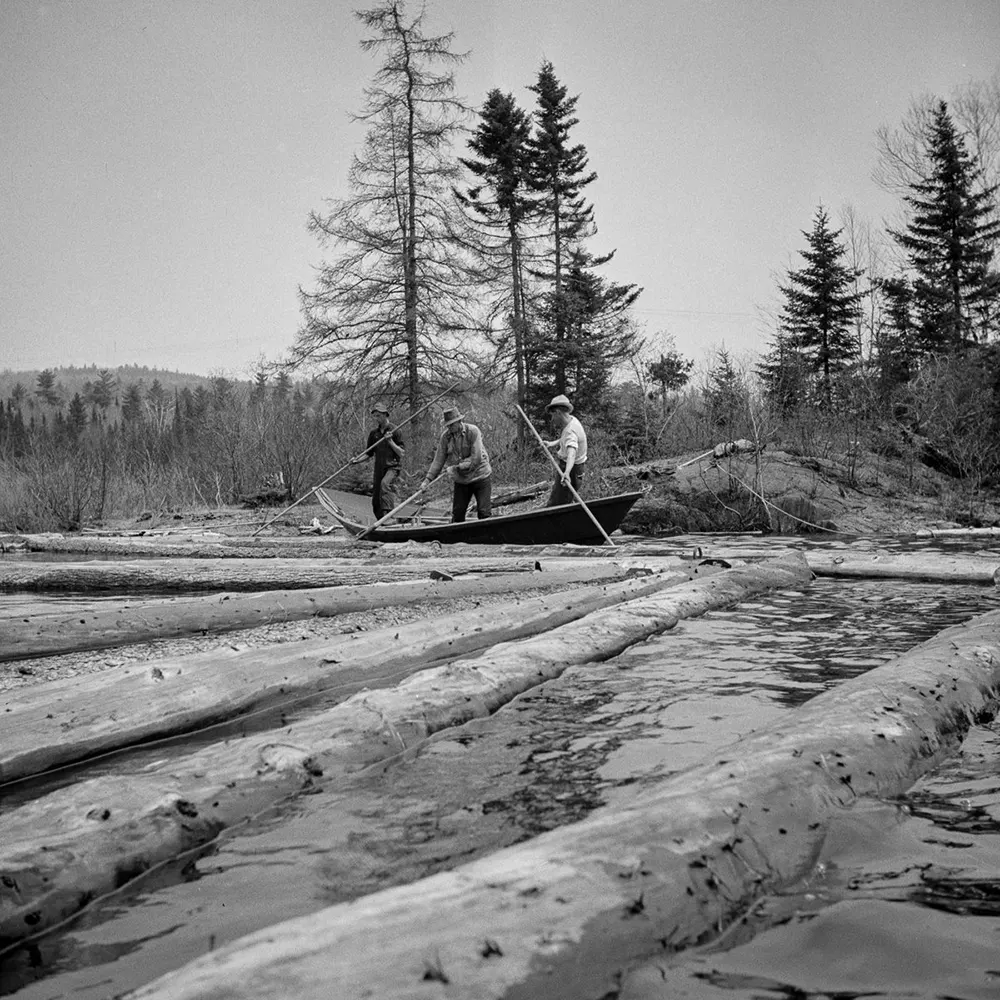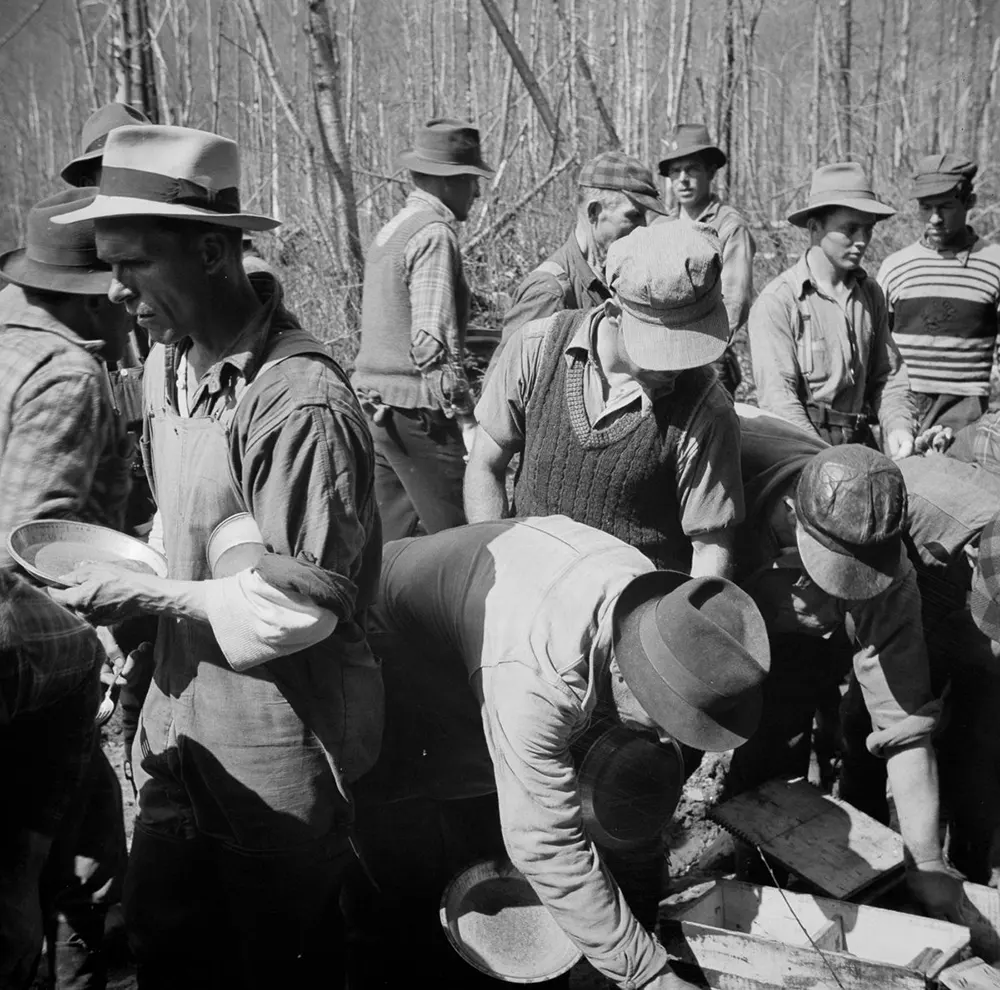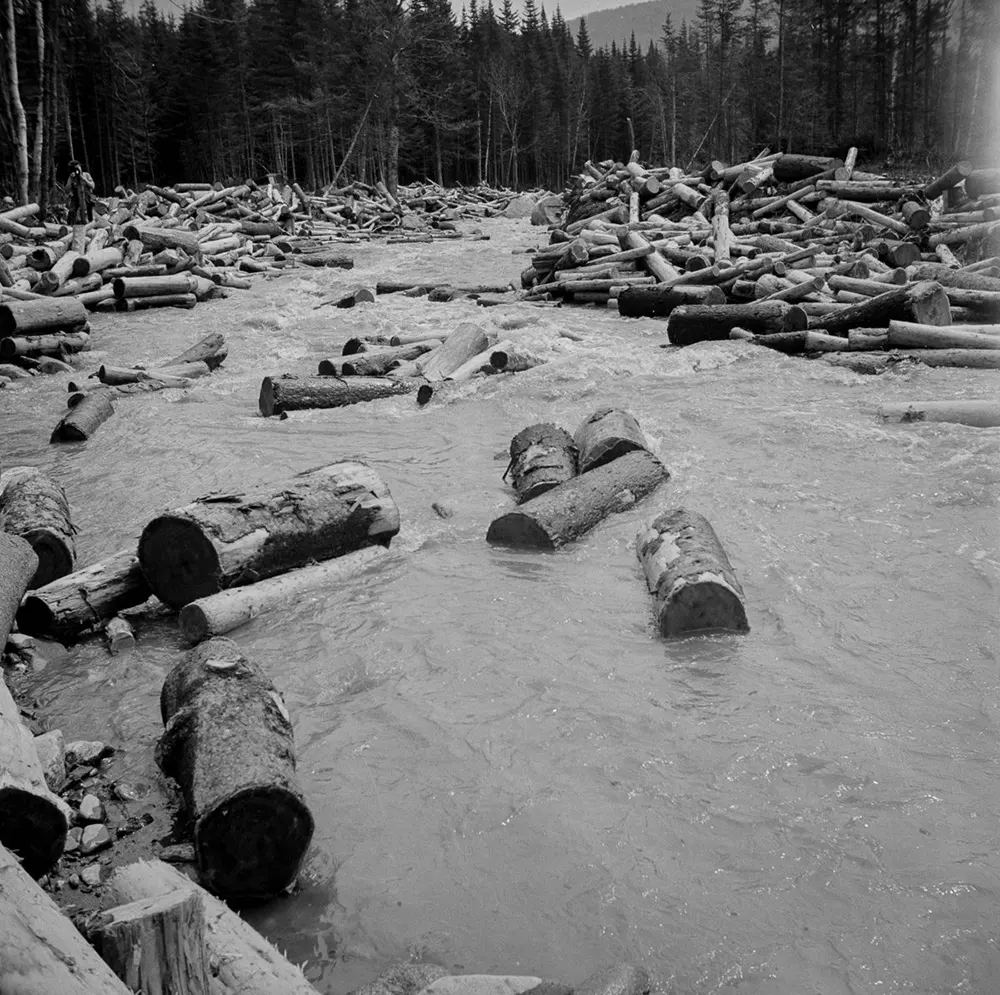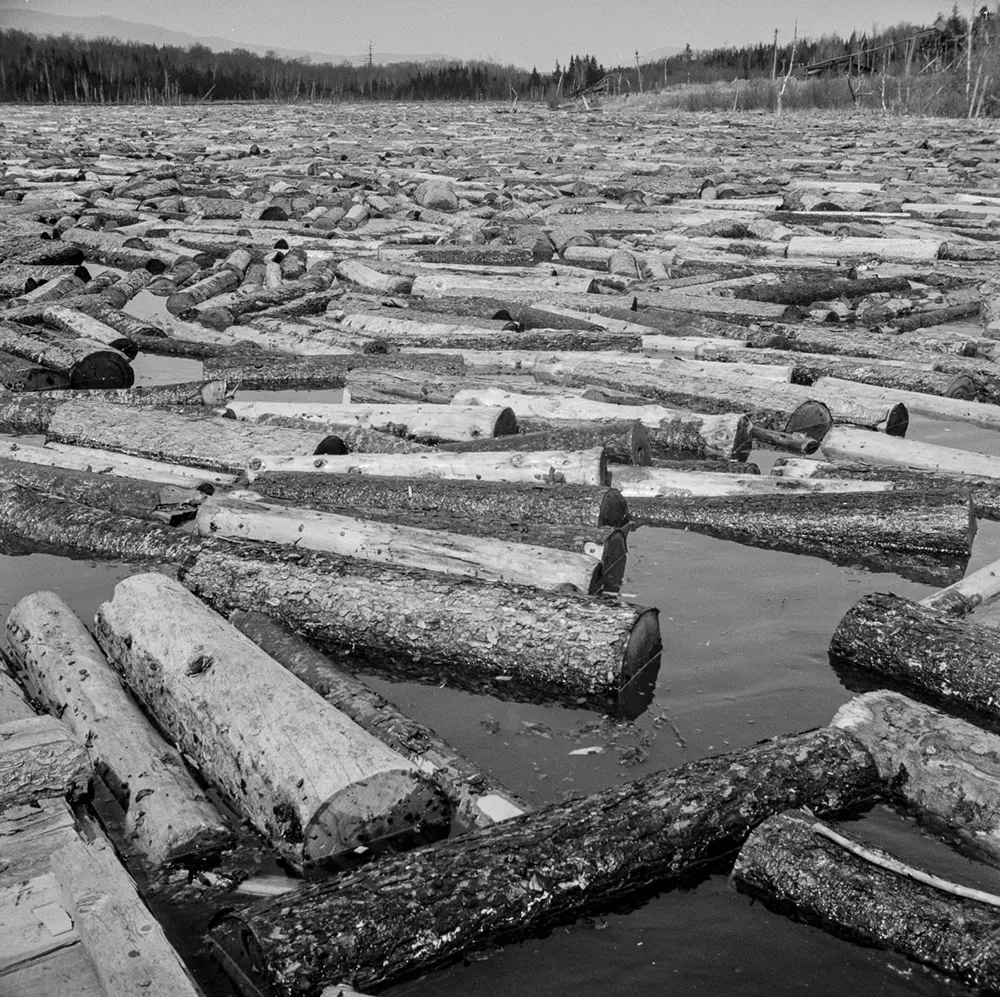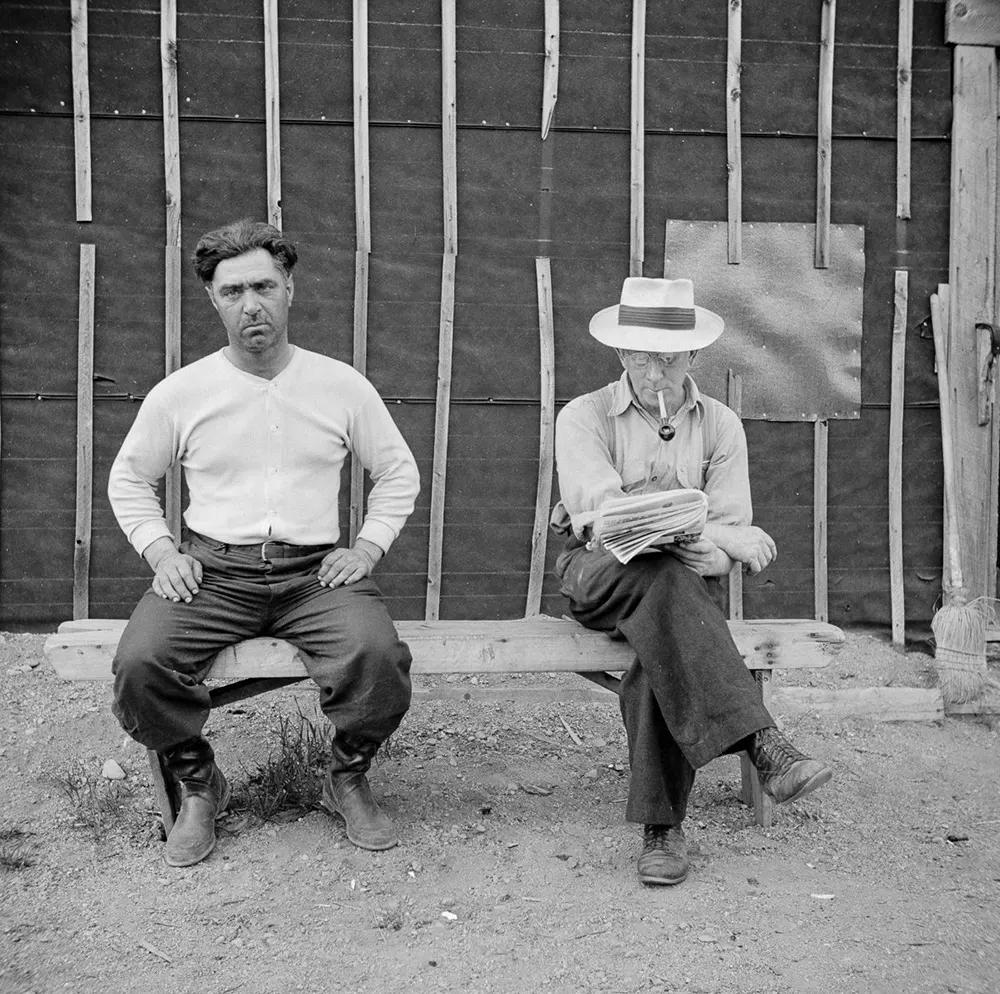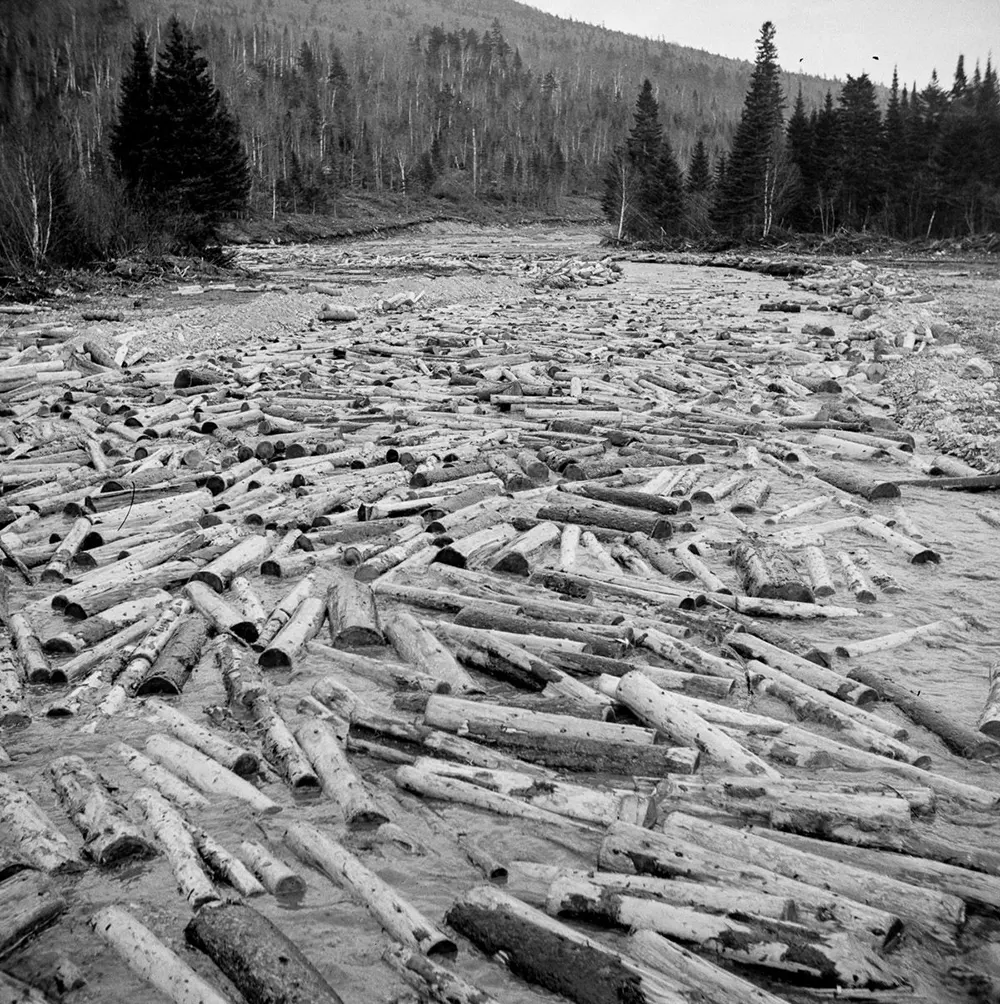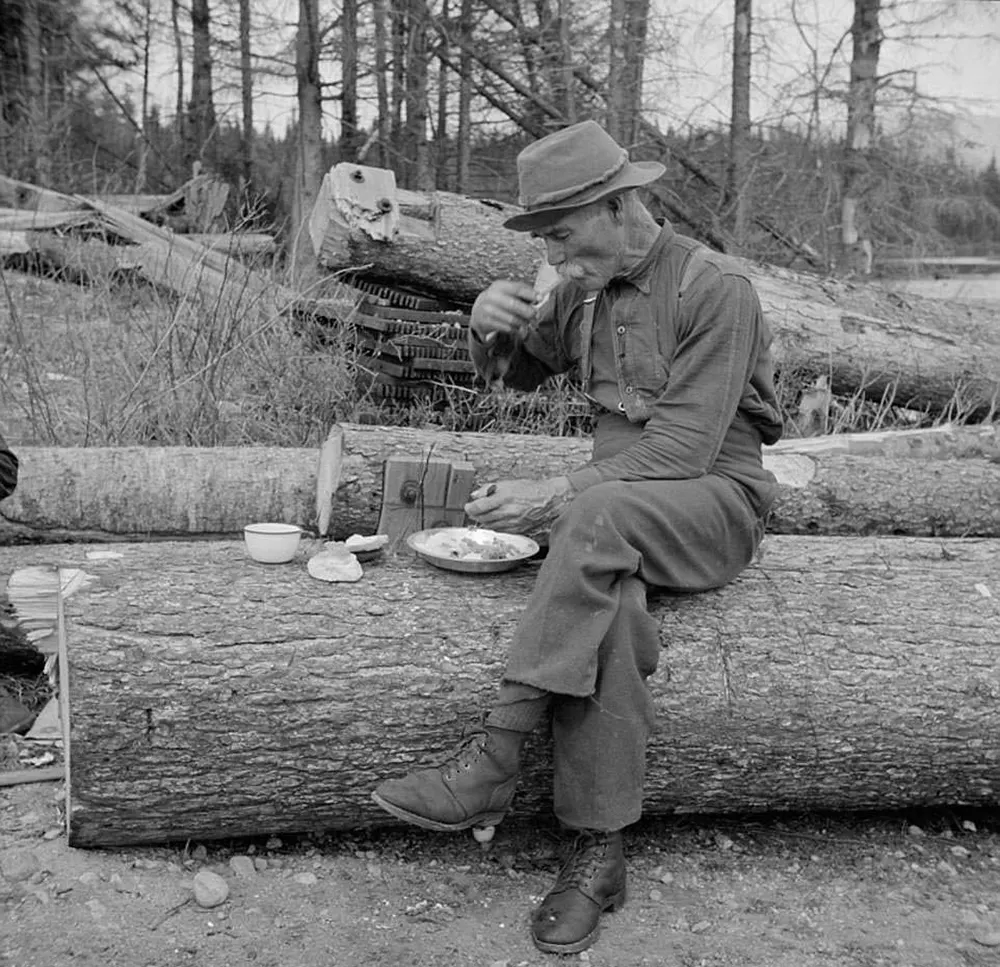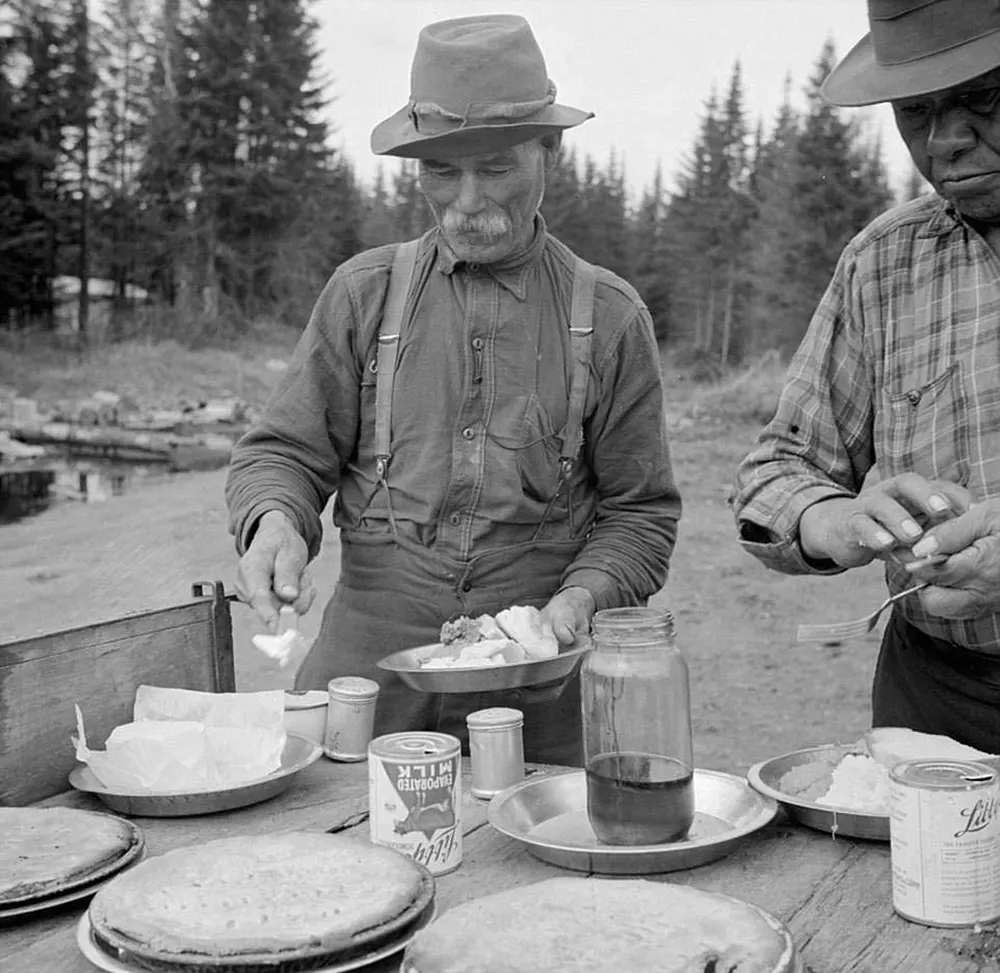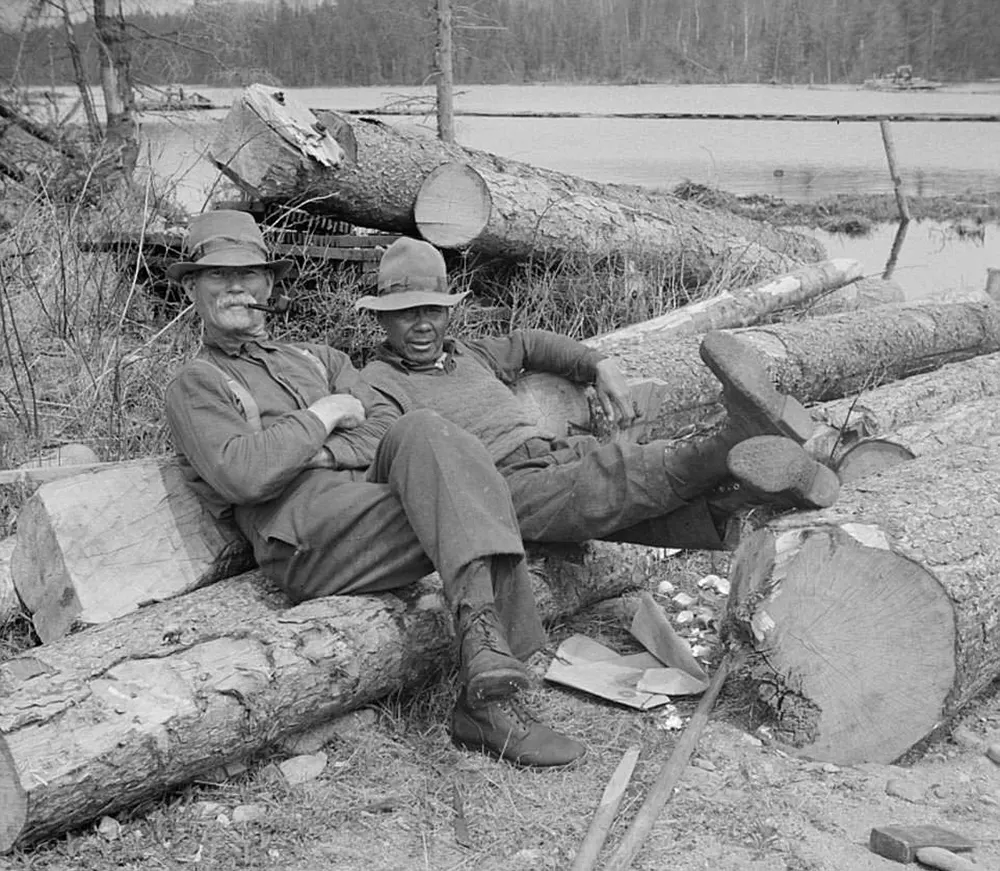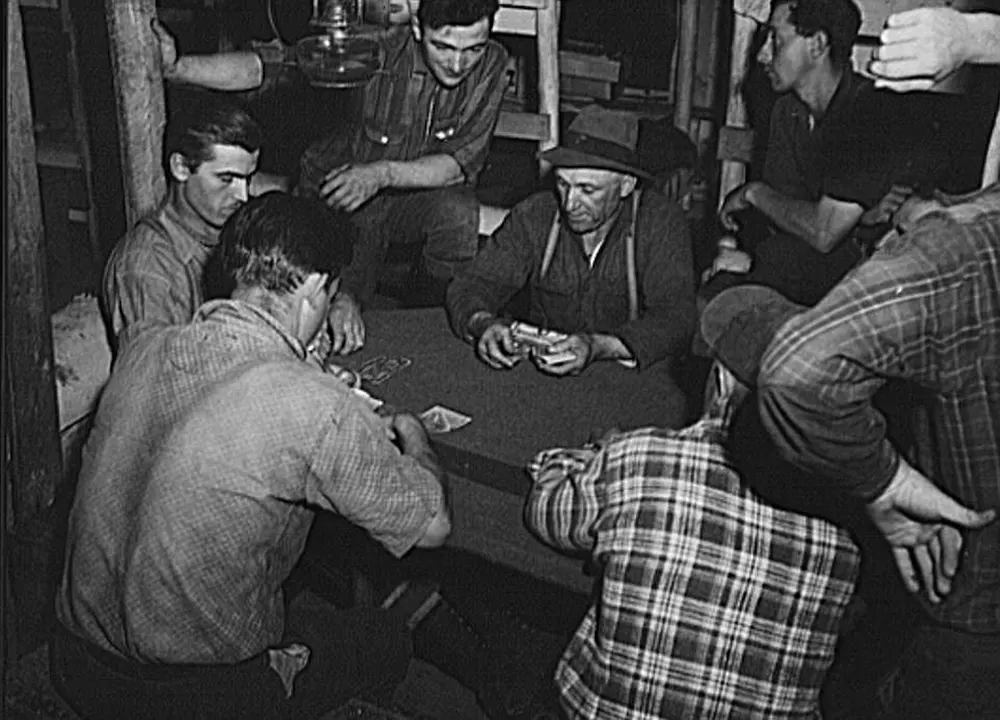The men were tasked with guiding thousands of heavy, slippery logs on the spring pulpwood drive down the Kennebago River and Mooselookmeguntic Lake toward paper mills for further processing. Collier’s trip came after the 1942 film Wood for War, which stressed the importance of protecting national forests so the trees could be used in the war effort. Wood was often used to replace domestic items as materials were diverted to the troops – such as metal cutlery, cotton clothes, and plastic chairs, all of which were made with wood substitutes. The material was also used by the military directly, hangars, barracks, ships, trucks, planes, bridges, and crates for shipping supplies. Logging in Maine began in the early 1600s when English explorers first cut trees on Monhegan Island. In 1634, the first sawmill powered by water was built in South Berwick. By 1832, Bangor had become the largest shipping port for lumber in the world. At times, as many as 3,000 ships were anchored there and one could almost walk across ship decks to Brewer. The early logging camp came into use in 1820. These camps consisted of a main camp built around a fire pit that supplied warmth and was also used as a cooking fire. Many camps were inhabited by a crew of 12-14 men and a team of oxen. Camps were constructed out of large notched spruce logs, cemented together by a mixture of moss and mud. The whole camp was put together without nails and all the work was done with an ax and froe. Roofs were made of cedar and a small square hole was in the center for the smoke to escape. All men slept in the same bed under one long blanket and used their boots as pillows. The men ate four meals a day, which consisted of flapjacks, pickled beef, boiled codfish, beans, sourdough biscuits, and strong tea. Clothes were dried over the fire on a long “stink” pole, held up by two forked stakes. Wet socks and clothes drying by the fire gave off an indescribable fragrance; it was said that you could smell a logger half a mile away. Needless to say, lumberjacks held the strength of the earth in their hands and were the heart and soul of the northern Maine woods.
(Photo credit: John Collier / Library of Congress). Notify me of new posts by email.
Δ Subscribe

